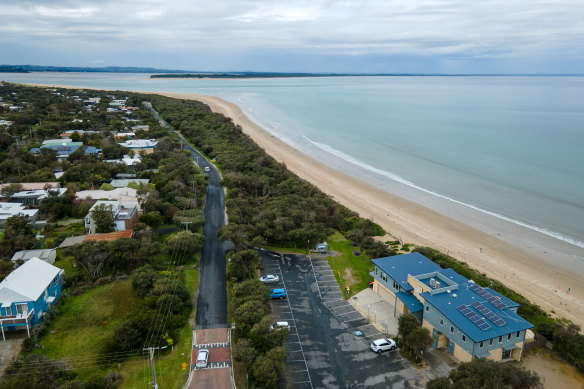‘Nuts to normal’: Popular Victorian towns where house prices fell most
House prices have fallen in a string of popular Victorian tourist towns as holiday-home owners and investors sell up amid cost-of-living pressures and land tax increases.
The steepest fall was in Mansfield at the foot of the Victorian Alps, down 9.1 per cent in 12 months to a median of $663,750, Domain’s House Price Report for the June quarter shows.
House prices in Bass Coast, home to Inverloch and Phillip Island, fell by 6.3 per cent to a median of $726,000 in the year to June, while the Northern and Southern Grampians fell more than 7 per cent each.
Domain chief of research and economics Dr Nicola Powell said prices in much of regional Victoria had fallen below the pandemic peak.
“We really have seen prices soften slightly, and they’re stable over the most recent quarter. This actually presents quite unique conditions compared to what we’d seen in the prior few years, where price growth was just running away with itself. It was unsustainable,” she said.
Powell said an increase in second-home-owner selling had contributed to falling prices in some popular holiday destinations, offering a wider range of housing stock for buyers keen to break into the regional property market.
“What regional buyers will be finding now is that fear of missing out is certainly not there,” she said. “I do think that provides grounds for many buyers to place in offers and seize this unique opportunity to actually purchase when prices are below peak.”
Powell said while prices had dropped in some areas, she expected the overall regional market to remain subdued and move towards a period of stagnation.
“It does showcase that perhaps the negative movement in price is behind us, and what we’re going to see is much more of a sideways movement of growth,” Powell said.
“I think we’re overall in for muted, subdued conditions for regional Victoria due to affordability and due to weak population dynamics. Population is a key driver of housing demand.”
Ray White Inverloch principal agent Fiona McMahon-Hughes said an oversupply of houses for sale on the Bass Coast, caused by a rise in investors and second-home owners selling, had resulted in falling prices in the holiday destination.
“We’ve got land tax affecting people. Every second home in Inverloch and throughout the Bass Coast, there’s a similar situation,” she said.
McMahon-Hughes said many homes for sale were generational holiday homes.
“These are people on normal wages ... suddenly they’ve got a bill of $7000, or some have been higher than that, and they’ve got to find that every year,” she said.

House prices on the Bass Coast fell by 6.3 per cent in the 12 months to June.Credit: Eddie Jim
“Some of these people are turning their homes to permanent rental or to holiday rental, trying to get something, but in the same respect we’ve got homes that are available, but we haven’t got the jobs for people.”
McMahon-Hughes said while it was a buyers’ market in the area, cost-of-living pressures were pushing away holiday home purchasers.
“We are a holiday destination ... the people buying holiday homes aren’t there,” she said.
“What we’re dealing with, if we’re lucky, is half a dozen buyers for over 120 properties.”
KPMG regional economist Terry Rawnsley said demand for properties in regional Victoria had reduced since the pandemic, causing house prices to weaken.
“The whole COVID-related migration surge came to an end in 2023 and no additional population growth is coming to those regional centres, so it’s coming back to fundamentals of supply and demand,” Rawnsley said.
He agreed that Victorians would be selling holiday homes to reduce costs in an inflationary environment.
“The holiday home would be the first luxury to dispense with,” Rawnsley said. “That’s probably reflecting the broader impact of those interest rate rises. People’s purchasing power is being crimped by interest rates and that’s hitting regional markets.”
Rawnsley said the steepest price declines were in council areas where the normal economic fundamentals of supply and demand had resumed, with local buyers now unwilling to pay lockdown-era prices.
Principal agent at McGrath Mansfield Kate Mcdougall said properties were still highly sought after in the popular alpine town as prices returned to pre-pandemic levels.
“They’ve gone from what I would say nuts to normal,” she said.
Despite recording an annual decline, Mcdougall said prices remained high in Mansfield, but it was taking longer for homes to sell.
“It’s not so much a lot of price drops, but it’s more the days on market are much longer. Now you’re looking at 90 days on market as opposed to 30,” she said.
“We’re still finding that we’re getting good results, just due to our tourism volume and the snow resorts ... but it’s just taking a lot longer to sell.”
Mcdougall added that while the rental market was strong in Mansfield, investor activity had dropped off since increases to land tax were introduced.